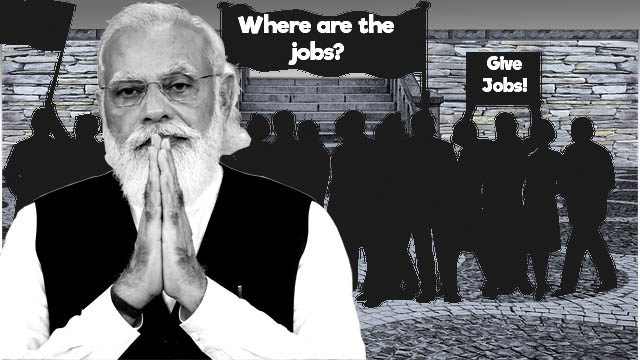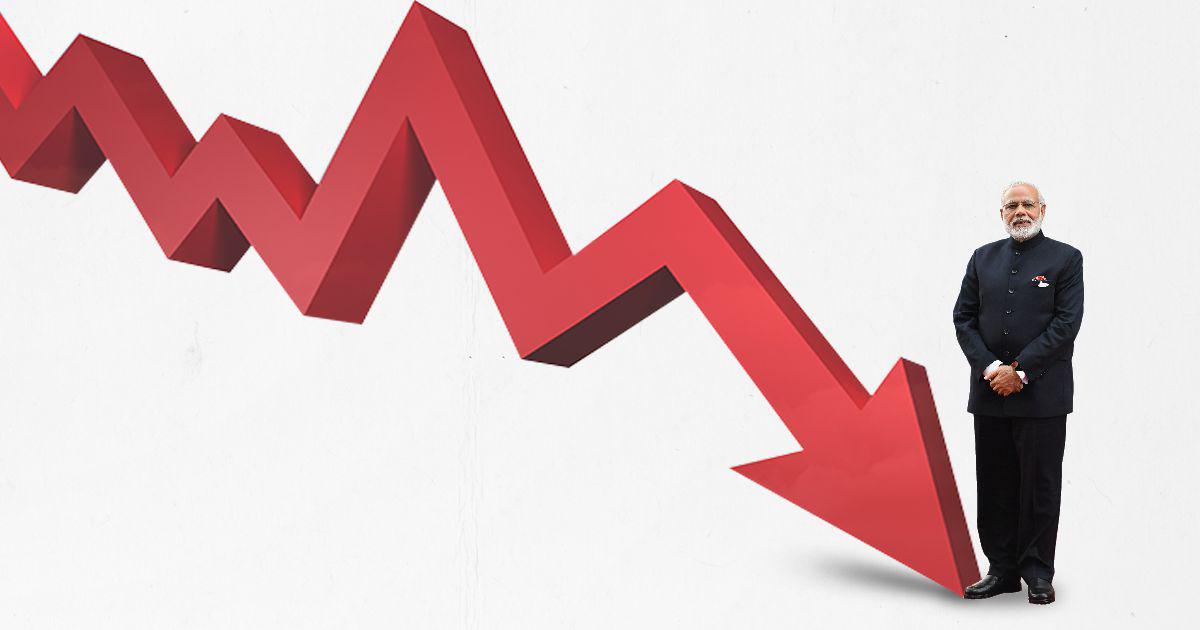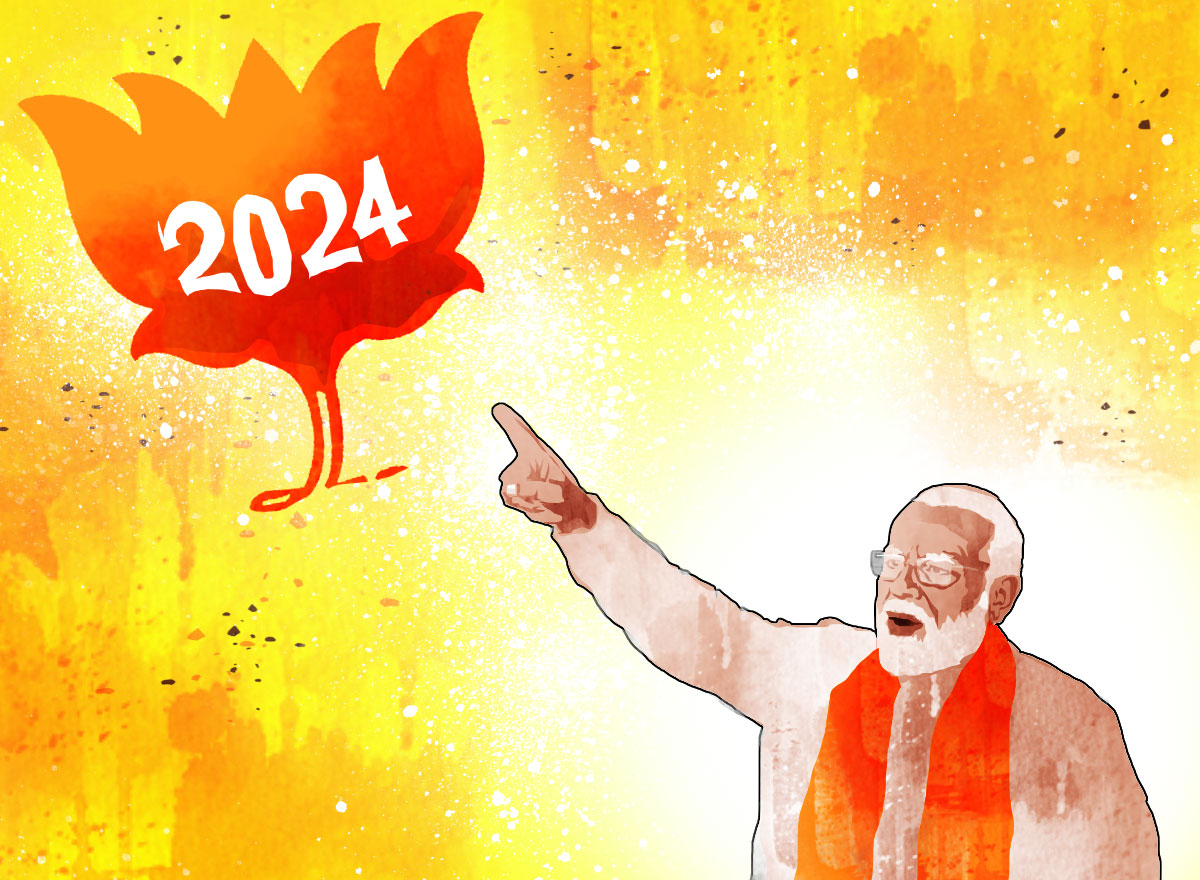Modi and BJP Government’s long list of unfulfilled promises- Choose your leaders responsibly in 2024
Modi and BJP Government had set various modest goals and promises to be fulfilled by 2022, however, even one year later none of them seem to have been fulfilled.

Modi and his empty promises
Contrary to the idyllic image painted by Godi media, the Modi administration has left an array of half-abandoned major programs, unfulfilled promises, and erratic decision-making in a variety of critical domains. During India’s 76th Independence Day festivities at the Red Fort in New Delhi, PM Narendra Modi mapped out a road map for glory in 2047, despite the fact that the promises he made for 2022 remain disregarded and scattered.
The prime minister issued a warning, saying that if people continued to engage in self-praising the country’s hopes would be shattered, while continuing to pat himself on the back for supposed accomplishments over the previous 75 years.
Addressing the Prime Minister of India, the Congress party said that by breaking the pledges he had made over the previous eight years, he was letting the nation down. While speaking to the media at the party’s headquarters, Congress spokesperson Pawan Khera mocked Modi by asking, “What happened to the promises of doubling farmers’ income, giving houses to all, bringing back black money, employment, and giving Rs 15 lakh in every bank account?”
In line with Khera’s comments, Congress spokesperson Gaurav Vallabh remarked that the Modi government’s pledges for 2022 included a house each and every Indian, increasing threefold the income of farmers, fully operational bullet trains, as well as a USD 5 trillion economy. “How and when will this culture of false promises end? Is the PM going to give new deadlines of promises made for the year 2022 using smoke and mirrors culture?” Mr. Vallabh inquired.
Let us take a closer look at the lengthy list of promises made and abandoned by the BJP government and Modi:
- Employment Opportunities
On the twenty-second of November 2013, PM contender Narendra Modi promised to generate 1 crore new employment annually during a rally in Agra. According to Manmohan Singh, Modi promised to generate 2 crore new employment. Over 5 crore people were unemployed in November of ten years later, according to CMIE. The unemployment rate has been rising over the past few years, rising to 25% during the initial lockdown from an average of 7.5%. In April, the government released its own ‘genuine’ statistics to support its claims that the labor market was improving after being outraged by this disclosure. The official data, according to economists, are out of date.

- Electricity, Water and Toilets
The prime minister has been quoted as stating in 2014- By 2022, we should complete one assignment. Nobody in the nation ought to live without access to a toilet, electricity, or water. The very least that we need to do is this. The ‘minimum task’ has not, by all appearances, been completed.
When we learn that the President’s ancestral hamlet received power only after her nomination in June of this year, the promise of electricity to every home seems ill-fated. The promise of water and toilets in every household has similar outcomes. Less than 52% of rural families have access to tap water, according to information provided by the Jal Shakti ministry in response to a Rajya Sabha query. It gets worse. According to another response from the government, 80% of Indians are probably drinking “poisonous” water.
Despite the fact that every community has been certified free of open defecation, the truth is completely different. According to a South Asian Labour Network report from 2021, 45% of Indians are still defecating in public. There are not any of the over 12 lakh toilets that have been built (on paper).
- Smart cities
Just two months after assuming office as prime minister, in July 2014, Modi announced that they will develop 100 smart cities with revolutionary communication abilities. In earlier times, cities were constructed along riverbanks. The location of the newly constructed ones will depend on the accessibility of next-generation infrastructure along roadways.
He had already proposed an extra $1.2 billion investments in the industry, with money coming from both domestic and foreign sources. On the basis of this, McKinsey had predicted that in the context of both residential and commercial space, India will add a Mumbai every year. Singapore and Japan, both excited about the potential opportunities, gave pre-emptive assistance. The British Foreign Secretary provided GBP 1 billion in credit. Modi’s smart city vision was inspired by Dholera, a dormant project in Gujarat supported by private capital as well as real estate backing.
The Guardian harshly commented on ‘India’s Smart City Craze: Big, Green, and Doomed from the Start?’ in 2014. Another research in India discovered that Modi pledged to develop 100 new smart towns in a period of five years, but just 30% of funding were provided nine months before the deadline.

- Cleaning of Ganga
The Modi administration said that cleaning the Ganga was its top priority after taking office in 2014. To that end, Namami Gange, a programme with the aim of improving the Ganga river’s declining water quality, was introduced. It made promises about halting pollution and declining quality. However, it was not until after the order in October 2016 that construction on it began. A plan was made under the Namami Gange initiative to spend INR 20,000 crore initially, which was then expanded to INR 30,000 crore, from the financial year 2014–15 to 2020–21. However, only roughly 50% of this budgeted expenditure has actually been allocated.
In their order of July 22, 2022, the NGT indicated that the environmental flow of the Ganga had additionally decreased drastically. On paper, this was another good proposal, which remained on paper only.
- Doubling earnings of farmers
PM Modi vowed to double farmer earnings by 2022 during a rally in 2016. The most recent official statistics depicts a bleak picture. Farmers make INR 27 per day from agriculture. Double-digit growth would have been necessary to achieve double-digit earnings. However, the rate of increase in recent years has averaged 2.8%. Frustration with poor earnings fueled the largest farmers’ revolt in history, when the authorities quietly implemented three anti-farm laws. Modi again vowed to double farmers’ wages by August 15, 2022 at Gondia on April 4, 2019. He stated that the government currently provides INR 75,000 annually to 12 crore farmers via the Kisan Samman Yojana. As the deadline approached, agitated farmers scoffed at the claim that was made.
- Bullet trains
On February 12, 2018, the Prime Minister stated in Doha that the 508-kilometer Sabarmati-Mumbai bullet train, his ultimate project, will be completed by August 15, 2022. Following that, the date was shifted to December 2023. On the other side, in August 2022, the Ministry of Railways announced through Twitter that just 22% of the construction had been completed, with only land acquisition remaining. Ashwini Vaishnav, the rail minister, said a ‘curtailed run’ of the proposed bullet train connecting Surat and Billimora is probable by 2026, exactly four years after Modi’s target.
- House for every Indian
On July 28, 2018, Modi boldly declared that there would be a house for each and every Indian by 2022, including 54 lakh additional units in urban regions and one crore in rural areas. There is still a housing scarcity. Pursuant to the PM Awas Yojana (Urban) dashboard, approximately 60 lakh sanctioned dwellings (50% of the objective) have yet to be finished.
- Space missions
Modi declared from the Red Fort on August 15, 2018, that India will send astronauts into space prior to Independence Day in 2022. The allocation for the Department of Space was increased by 23%, putting ISRO under intense pressure to keep the PM’s commitment. The deadline lapsed, and the gap between the Prime Minister’s ambitions and India’s realities became clear.

- Growth of economy
Modi pledged on September 21, 2018, that he would make India an economy worth five trillion dollars by 2022. He also promised a growth rate of eight percent with “massive” job creation in IT as well as retail. The previous year, the PM’s ultimatum passed in utter silence, amidst significant layoffs in IT along with retail. However, railways minister Ashwini Vaishnav just produced a paper predicting that India would be a $26 trillion economy by 2047!
- Elimination of malnutrition
The prime minister announced the POSHAN Abhiyan in 2018, with the goal of eliminating malnutrition in India by 2022. According to the National Family Health Survey-5 (2019-21), malnutrition is widespread, with only moderate improvement countrywide. Thirteen states, in fact, have documented an upsurge in stunting. The frequency of anaemia among newborns and women has increased dramatically, increasing by 14.5% and 7.5%, correspondingly. According to the Global Hunger Index, India ranks 101st out of 116 nations, below our neighbors Sri Lanka, Nepal, Pakistan, and Bangladesh.
- Connecting villages with optical fibre
On August 15, 2020, PM Modi pledged to link every one of the six lakh villages in India with optical fiber by 2023. In her Budgetary speech, Finance Minister Nirmala Sitaraman emphasized the PM’s main initiative. However, with some months left of 2023, the PM’s goal is out of reach. The implementation is gradual, and the targets have shifted.
With barely some months until the 2024 general elections, India is seeing more than a half-dozen elections that are setting the tone for the main contest. And with each new campaign comes a fresh set of promises. The BJP is frequently seen as an election machine that views each election as a battle for survival. PM Modi, the party’s star campaigner, frequently launches numerous social packages, inaugurates, and lays foundation stones for various projects right before elections.
However, several of the marquee projects had claimed that they would be finished by 2022. We are now in the year 2023. However, the administration has failed to meet even one substantial welfare-oriented aim.

Way Forward for 2024 elections
For every country, selecting political leaders carefully is of utmost importance. It transcends superficial charm, meaningless speeches, and commitments left just on paper. Leaders that can not only enthral the people with their words but also have the will and competence to follow through on their promises are what the world needs right now. The results of electing leaders who do not keep their promises might be disastrous in today’s complicated and fast-paced environment.
Political leaders have the ability to affect policies, the course of a country, and the lives of its people. Therefore, it is essential to assess their performance history, moral character, and capacity for keeping their commitments. A leader who just succeeds in speech but taking no significant action is comparable to a ship without a rudder that is drifting about aimlessly in turbulent seas. The electorate must be able to distinguish between those who offer things with sincere intentions and those who only have political benefit in mind.
The people may be lured by high rhetoric and empty promises, but these tactics seldom solve the root problems affecting society. A responsible leader must be competent and committed to putting actual ideas into action rather than relying primarily on words to motivate change. Citizens must examine the deeds and accomplishments of potential leaders rather than being influenced just by their oratory prowess or alluring charm.
The significance of leaders who can close the gap between promises and reality is indisputable in a society confronting multiple difficulties such as economic inequality, deterioration of the environment, instability in society, and technological developments. Citizens deserve leaders who will put the welfare of the people first, uphold transparency, and rigorously carry out their obligations.
Furthermore, citizens feel more confident and more trusting of their leaders when they can turn their campaign pledges into reality. They offer a solid basis for a flourishing society with peace among its members who work together to further the common good. A leader who lives up to their commitments and gains the respect of the individuals they lead, creates an environment that is conducive to sustained growth.
Finally, choosing political candidates possessing honesty, competence, and a sincere desire to advance the welfare of the country must be given preference by the electorate. Citizens may help create a future where promises are not just abstract ideas on paper but rather the cornerstone of real development and long-lasting change by selecting leaders wisely.




